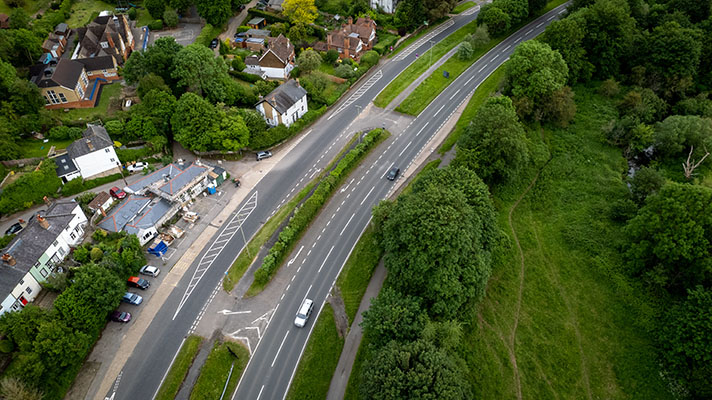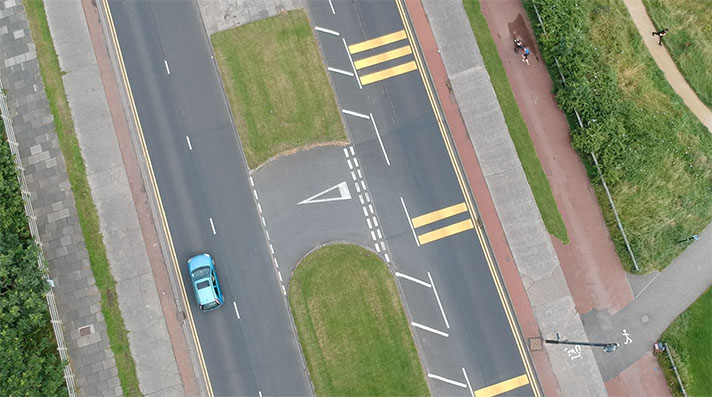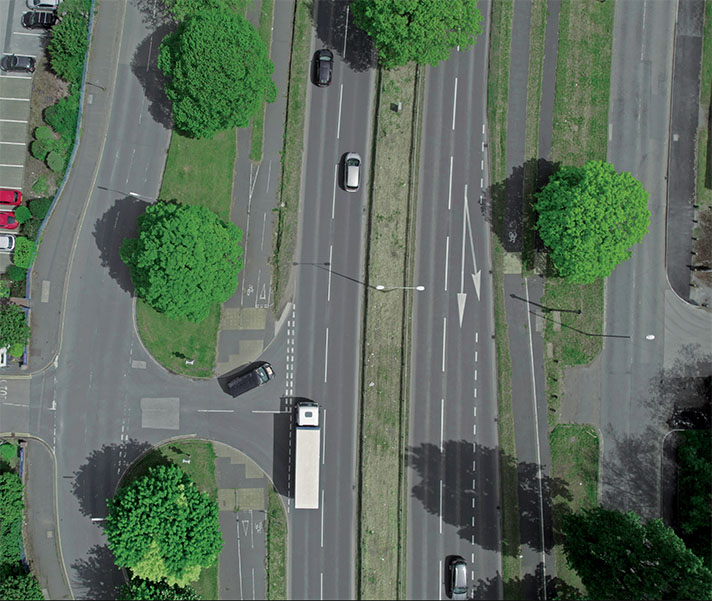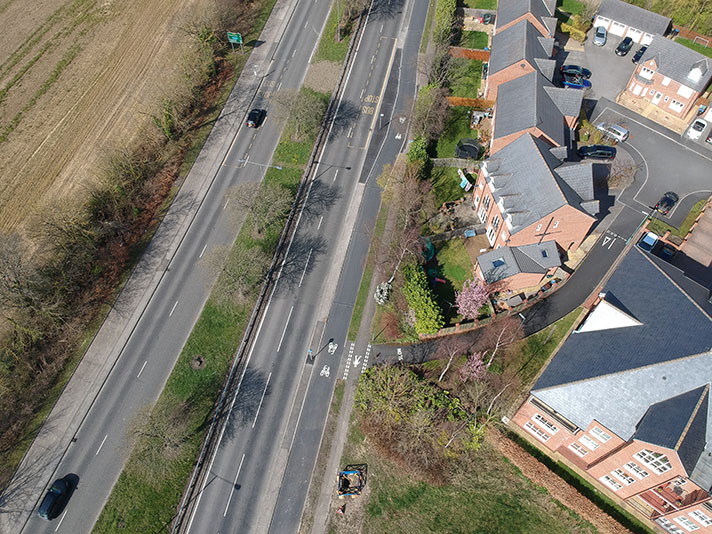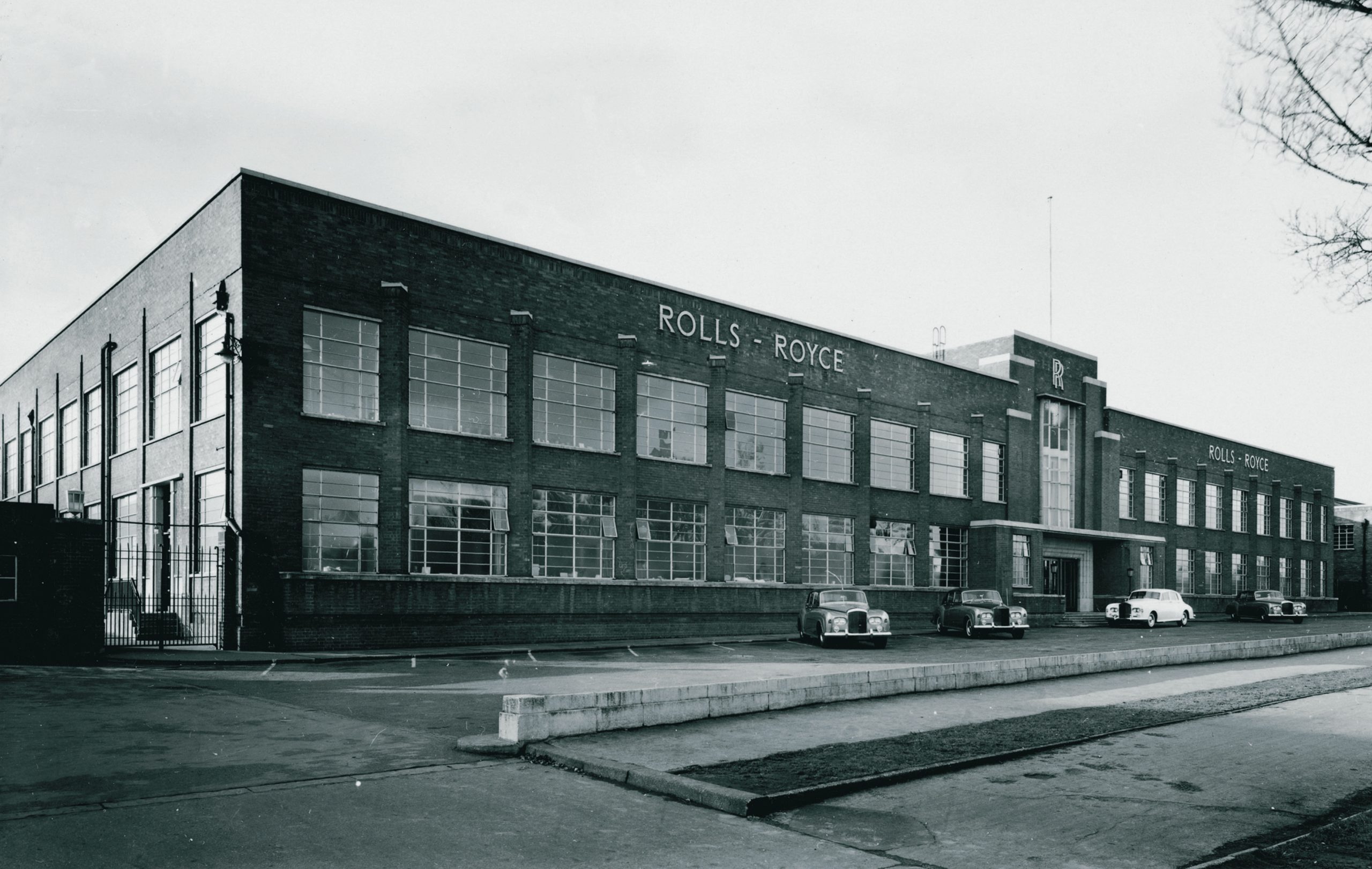
Rolls Royce factory with cycle tracks in front, Pyms Lane, near Crewe. Credit: Rolls Royce archives.
In summer 1938, Crewe Corporation started to widen and straighten Pyms Lane to service the new build Rolls-Royce factory that, because of the coming war, swiftly replaced the potato fields of a nearby farm. By the end of the year the factory was ready to turn out the first of 26,000 Merlin aircraft engines, engines that could be said to have won the war for the allies. Merlin engines were used in fighters such as the Spitfire and the Hurricane and they also powered the RAF’s Lancaster bomber and the de Havilland Mosquito fighter-bomber.
At its peak in 1943, 10,000 people were employed at the Pyms Lane factory. Many would have cycled to work, and might have therefore used the superlative cycle track installed at the same time as the building of the factory.
The Crewe factory shadowed Rolls-Royce factories in Derby and Glasgow.
Merlin engines were also made at the Ford factory at Trafford Park, Manchester. Of these four factories, only the Glasgow one didn’t have an adjacent cycle track.
“Crewe Corporation are wasting no time in preparations for new Rolls-Royce works at Crewe,” reported the Crewe Chronicle in August 1938.
“The Borough Surveyor (Mr. L. Reeves) reported that in connection with the reconstruction and extension of Pym’s-lane he had prepared plans for a 50ft. road, but if a grant was made by the Ministry of Transport he had reason to believe that they would require provision to be made for cycle tracks which would increase the width of the road to 80ft,” added the newspaper.
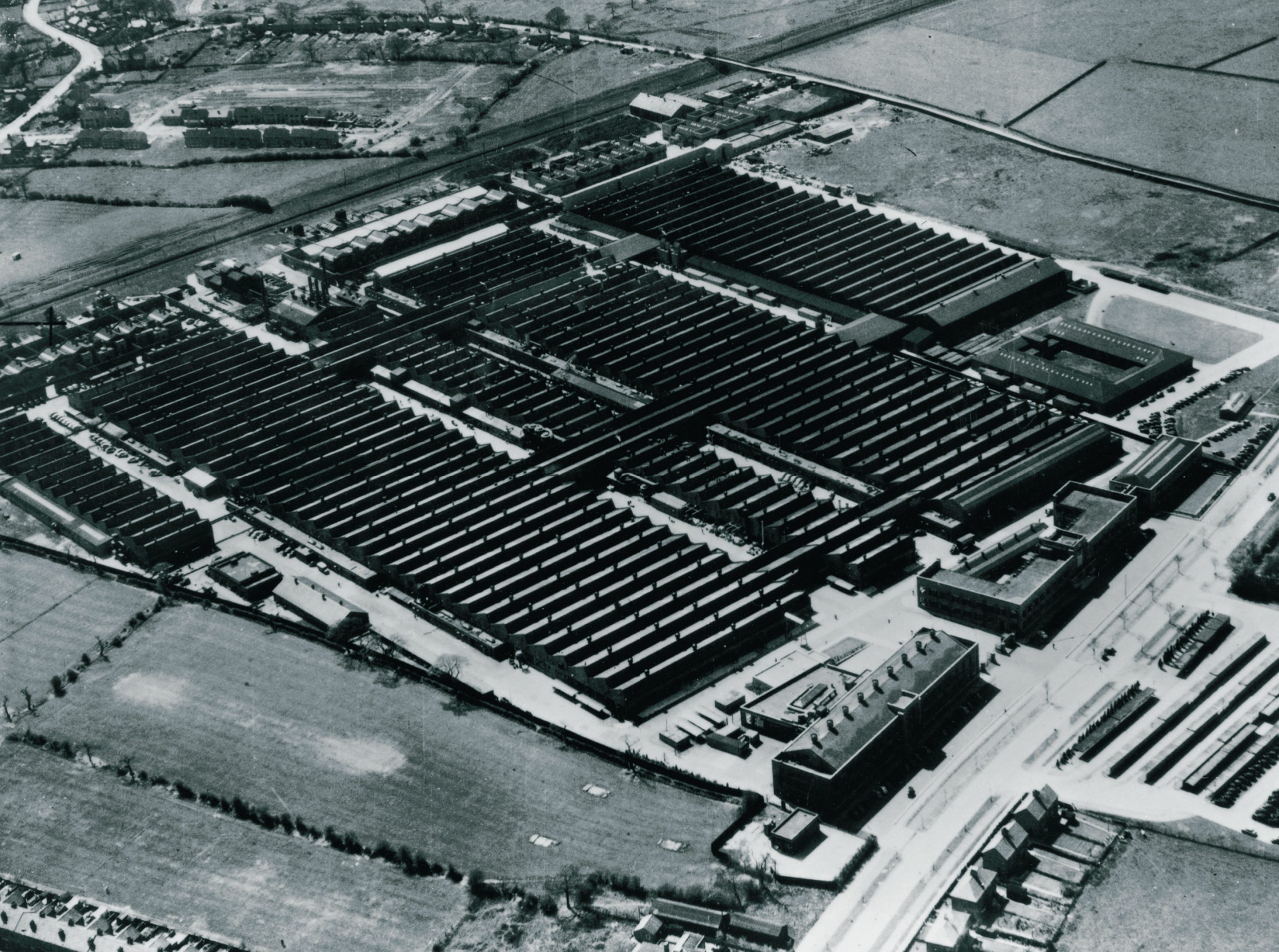
Cycle tracks and footways can be seen on both sides of the road in front of the Rolls-Royce factory on Pyms Lane during WWII. Credit: Rolls Royce archives.
The Ministry of Transport made this grant yet, interestingly, the corporation also applied “to the Ministry of Health for a loan of £19,026 to carry out the work.”
In October of the same year the borough surveyor reported that the Pear Tree Farm House [opposite the main factory building, on the north side of Pyms Lane] “would foul the cycle track.”
Cycle tracks were installed on both sides of the road, as can be confirmed on period aerial photographs.
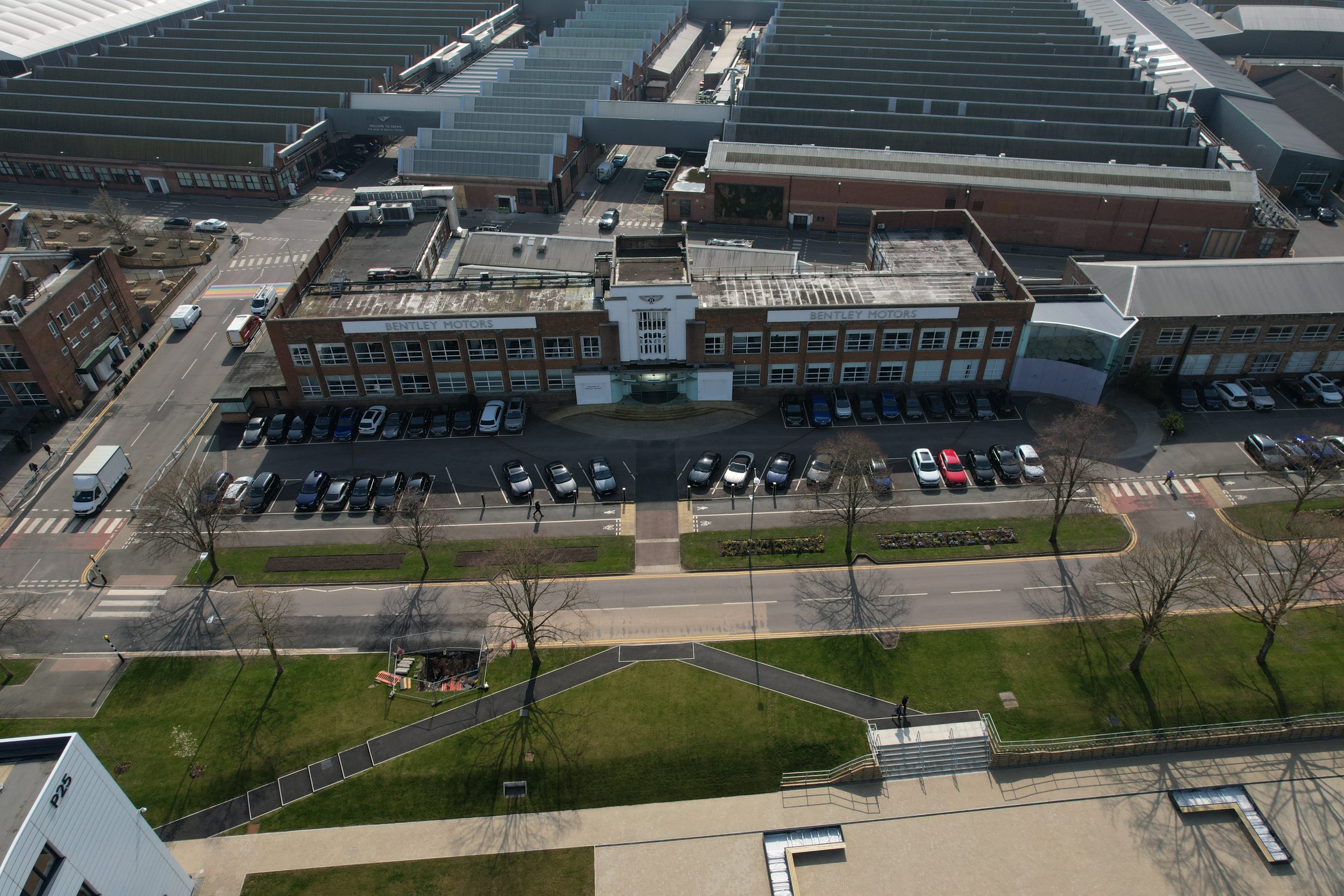
Shared use path in front of the same administration building in above WWII-era photo. Building is now the reception for Bentley Motors.
(In the swipeable map at the top of this page note how the period factory has zero car parking yet, today, much of the area to the north and west of the factory is devoted to the storage of private cars. In the 1930s and probably for several years after the war, the workers would have used bicycles and public transport to get to the factory.)
The cycle track and footway in front of the Rolls-Royce factory can be seen in several period photographs, including two from the Francis Frith collection dating from 1965.
In 1991, the cycle track on Pyms Lane still sported a 1930s-era “Cyclists Only” sign.
After the war the factory was converted to making Rolls-Royce cars, the last of which rolled off the production line in 2002. Bentley later took over the plant, and still operates it today. Pyms Lane, built at the public expense, was made into a private road through the Bentley “campus” in 2020.
Some parts of the cycle track and footway on the south side of the road — in front of the main 1930s-era administration buildings — have also been removed but much is still in situ and has been both resurfaced and painted with modern icons of a walking man and a bicycle.


